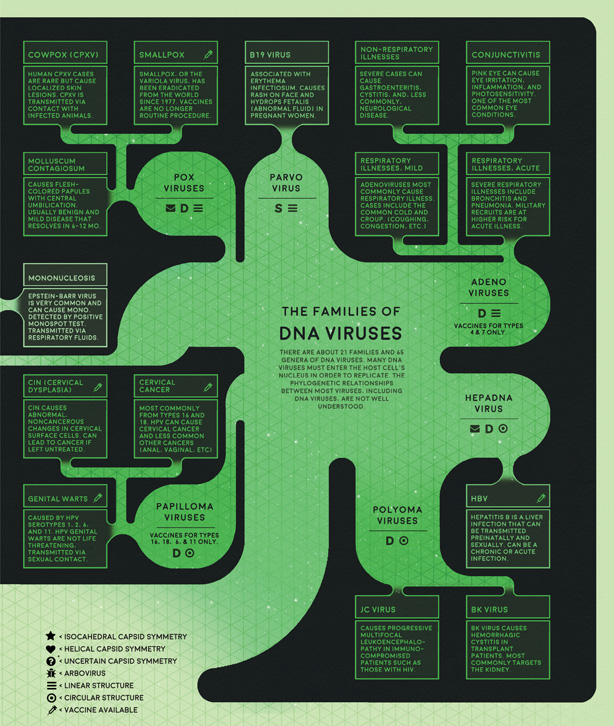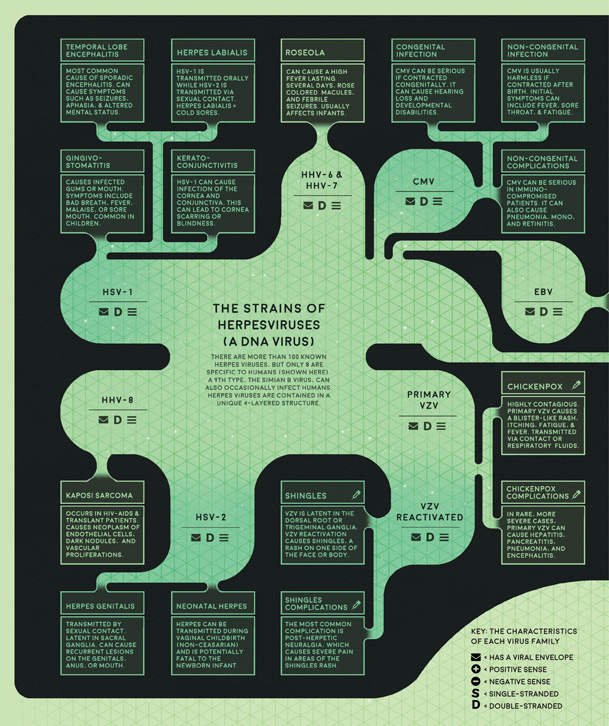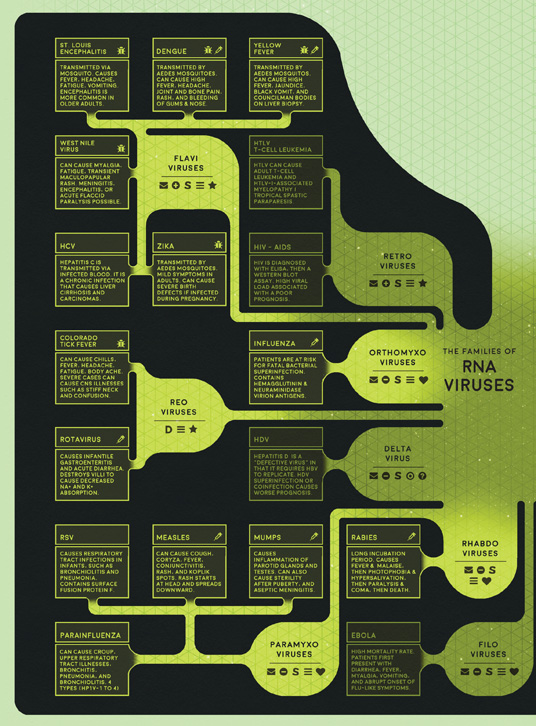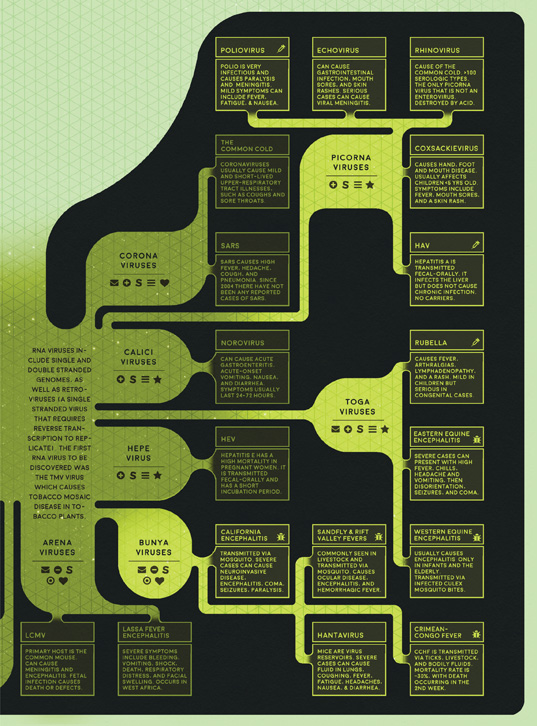
This Article From Issue
March-April 2018
Volume 106, Number 2
Page 76
This chart shows some of the most common human viruses. Viruses are obligate, intracellular parasites that require a host cell for reproduction. Viruses replicate by entering into a host cell and producing viral proteins that help replicate the viral genome, the new generation of virions exits the cell and spreads to new cells.

Viral Replication
DNA viruses all replicate in the nucleus except for the pox virus, which replicates in the cytoplasm.
RNA viruses all replicate in the cytoplasm
except for the inflenza virus and retroviruses, which replicate in the nucleus.
Types of Viral Vaccines
Viral vaccines include live attenuated vaccines, killed viruses (rabies, influenza, polio, and HAV), and subunit vaccines (HBV and HPV).
Live attenuated vaccines are dangerous to give to immunocompromised patients.
The Families of DNA Viruses
There are about 21 families and 65 genera of DNA viruses. Many DNA viruses must enter the host cell’s nucleus in order to replicate. The phylogenetic relationships between most viruses, including DNA viruses, are not well understood.

The Strains of Herpesviruses (A DNA Virus)
There are more than 100 known herpes viruses, but only 8 are specific to humans (shown here). A 9th type, the Simian B virus, can also occasionally infect humans. Herpes viruses are contained in a unique 4-layered structure.

The Families of RNA Viruses
RNA viruses include single and double stranded genomes, as well as retroviruses (a single stranged virus that requires reverse transcription to replicate). The first RNA virus to be discovered was the TMV virus, which causes tobacco mosaic disease in tobacco plants.

Single-stranded RNA viruses can be classified as positive sense, negative sense, or ambisense. positive sense viruses have a genome with the same mRNA sequence that is required to make viral proteins. negative sense viruses have a genome that is complementary to the mRNA sequence. ambisense viruses are positive sense in some genome sections, and negative sense in other sections.

For more about how this graphic was researched, or how it was put together, visit Eleanor Lutz's blog.

American Scientist Comments and Discussion
To discuss our articles or comment on them, please share them and tag American Scientist on social media platforms. Here are links to our profiles on Twitter, Facebook, and LinkedIn.
If we re-share your post, we will moderate comments/discussion following our comments policy.